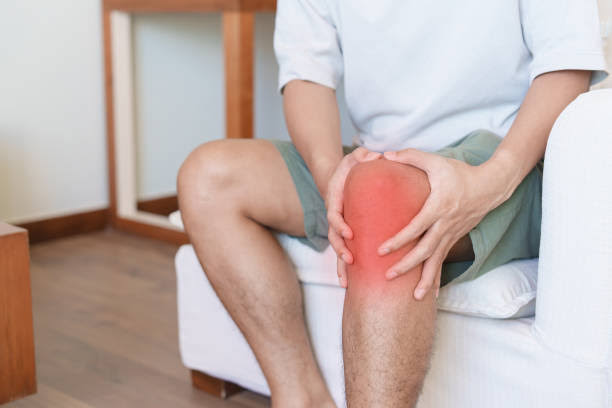Patellofemoral Pain Syndrome (PFPS), often referred to as “runner’s knee,” is a common condition characterized by pain around or behind the kneecap (patella). It is especially prevalent among athletes, particularly runners, but it can affect anyone, including those who engage in activities that put repetitive stress on the knee joint. The pain associated with PFPS typically worsens with activities like running, squatting, climbing stairs, or sitting for prolonged periods with the knees bent.
Understanding Patellofemoral Pain Syndrome
Patellofemoral Pain Syndrome occurs when the patella doesn’t move or “track” properly in its groove on the femur (thighbone). The kneecap should move smoothly within the femoral groove when you bend or straighten your knee. However, various factors can cause it to deviate from its path, leading to increased pressure on the underlying cartilage, irritation, and pain.
Causes and Risk Factors
The exact cause of PFPS is often multifactorial, meaning it usually results from a combination of factors rather than a single issue. Common contributors to PFPS include:
- Overuse: Repeated stress from activities like running, jumping, or squatting can lead to irritation of the patellofemoral joint.
- Biomechanical Issues: Poor alignment of the patella within the femoral groove, flat feet, or improper movement patterns can contribute to the development of PFPS.
- Muscle Imbalance: Weakness or tightness in the muscles around the knee and hip, particularly the quadriceps, hamstrings, or hip abductors, can alter patellar tracking.
- Improper Footwear: Worn-out or inappropriate footwear can affect your gait and the alignment of your knee joint, leading to PFPS.
- Previous Injury: Past knee injuries, such as ligament or meniscus damage, can increase the risk of developing PFPS.
Symptoms of Patellofemoral Pain Syndrome
The primary symptom of PFPS is pain around or behind the kneecap, which typically worsens with activities that put stress on the knee joint. Other common symptoms include:
- Pain with Prolonged Sitting: Pain may worsen after sitting for long periods, especially with the knees bent, such as during a long car ride or while sitting in a movie theater (often referred to as “theater sign”).
- Pain with Knee Flexion: Activities that involve deep knee bending, like squatting, climbing stairs, or kneeling, can be particularly painful.
- Cracking or Popping Sensation: Some individuals experience a popping or grinding sensation (crepitus) when bending or straightening the knee.
- Swelling: Mild swelling around the kneecap may occur, especially after physical activity.
How Physiotherapy Can Help
Physiotherapy is a highly effective treatment for Patellofemoral Pain Syndrome. The goal of physiotherapy is to alleviate pain, improve knee function, correct underlying biomechanical issues, and prevent the recurrence of symptoms. A physiotherapist will develop a personalized treatment plan based on the specific causes of your PFPS and your individual needs.
1. Pain Relief and Inflammation Management
The first step in managing PFPS is to reduce pain and inflammation. Physiotherapists use a variety of techniques to achieve this:
- Rest and Activity Modification: Avoiding or modifying activities that exacerbate the pain is crucial during the initial stages of treatment.
- Ice Therapy: Applying ice to the knee can help reduce inflammation and numb the pain, especially after activities that aggravate the symptoms.
- Electrotherapy: Techniques like TENS (Transcutaneous Electrical Nerve Stimulation) or ultrasound therapy may be used to relieve pain and promote healing.
2. Improving Muscle Strength and Balance
One of the main goals of physiotherapy for PFPS is to address muscle imbalances that contribute to improper patellar tracking. Strengthening the muscles around the knee and hip can help stabilize the patella and reduce stress on the patellofemoral joint.
- Quadriceps Strengthening: Exercises like straight leg raises, leg presses, and mini squats target the quadriceps muscles, which are crucial for patellar stability.
- Hip Strengthening: Strengthening the hip abductors and external rotators can improve the alignment of the knee joint during movement.
- Core Strengthening: A strong core is essential for maintaining proper posture and movement patterns, which can reduce the risk of PFPS.
3. Stretching and Flexibility Exercises
Tight muscles around the knee and hip can contribute to patellar maltracking and PFPS. Physiotherapists will guide you through a series of stretching exercises designed to improve flexibility and reduce tension in these muscles.
- Hamstring Stretching: Tight hamstrings can pull on the knee and affect its alignment, so stretching these muscles is important.
- Quadriceps Stretching: Stretching the quadriceps can help maintain the balance between muscle groups around the knee.
- Iliotibial (IT) Band Stretching: Tightness in the IT band, which runs along the outside of the thigh, can contribute to PFPS, so stretching this structure can be beneficial.
4. Patellar Taping and Bracing
In some cases, taping or bracing the patella can provide additional support and help alleviate pain by improving patellar tracking. Physiotherapists may use techniques like McConnell taping, which involves taping the patella in a specific position to reduce stress on the joint.
- Patellar Taping: Taping can help correct the position of the patella and provide immediate relief from pain during activities.
- Knee Bracing: Braces that support the patella may be recommended for individuals with significant maltracking or instability.
5. Gait and Movement Retraining
Physiotherapists also focus on correcting any faulty movement patterns or gait abnormalities that may contribute to PFPS. This may involve retraining the way you walk, run, or perform specific activities to reduce stress on the knee joint.
- Gait Analysis: Physiotherapists may perform a gait analysis to identify abnormal movement patterns that contribute to PFPS.
- Movement Re-Education: Techniques to improve posture, foot placement, and alignment during movement can help prevent further irritation of the patellofemoral joint.
6. Education and Prevention Strategies
Education is a key component of physiotherapy for PFPS. Understanding the condition, its causes, and how to manage symptoms is essential for long-term recovery and prevention of future episodes.
- Footwear Advice: Physiotherapists may recommend appropriate footwear or orthotics to correct any alignment issues in the foot that affect the knee.
- Activity Modification: Learning how to modify activities to avoid overloading the knee joint is crucial for preventing flare-ups.
- Home Exercise Program: A tailored exercise program designed to maintain strength, flexibility, and stability in the knee joint will help prevent the recurrence of PFPS.
Conclusion
Patellofemoral Pain Syndrome is a common but treatable condition that can significantly impact your ability to perform daily activities and participate in sports. Physiotherapy offers a comprehensive approach to managing PFPS by addressing pain, improving muscle balance, correcting movement patterns, and educating patients on how to prevent future problems. If you’re experiencing knee pain that you suspect may be due to PFPS, consulting with a physiotherapist can help you develop a personalized treatment plan to relieve your symptoms and get you back to your normal activities with confidence.


